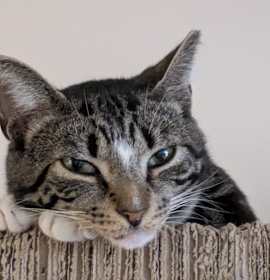They All Want To Live
Animal rescue in New York, New York
Get in touch with this rescue
Address
New York, NY 10026Hours of Operation
Donation
Donate to this rescueAddress
New York, NY 10026Hours of Operation
Never miss a new pet
Create an alert, and we will notify you every time a new pet comes in who meets your criteria.
Adoptable Pets at They All Want To Live

Turkey
Pigeon
Male, Young
New York, NY

Aldi
Pigeon
Male, Young
New York, NY

Orange Julius
Domestic Mediumhair
Male, 2 yrs 1 mo
New York, NY
House-trained

Xena
Domestic Shorthair
Female, 2 yrs 8 mos
New York, NY
House-trained

Ziggy
Domestic Shorthair
Male, 1 yr 6 mos
New York, NY
Needs experienced adopter
House-trained

Twinkie
Domestic Shorthair
Female, 1 yr 1 mo
New York, NY
Good with dogs
Good with cats
House-trained

K-Pop
Domestic Shorthair
Male, 4 yrs 3 mos
New York, NY
Good with dogs
Not good with cats
Needs experienced adopter
House-trained

Strudel
Domestic Shorthair
Male, 2 yrs 1 mo
New York, NY
Good with dogs
Good with cats
House-trained

Milton
Pigeon
Male, Young
New York, NY
Good with birds
Rescue FAQs
- 1. Interview
- 2. Approve Application
- 3. Home Check
Additional adoption info
We have different applications depending on the species. The duck and chicken applications are on our website (see link in next field). The cat and pigeon applications can be provided by emailing theyallwanttolive@gmail.com
Adoption application
Pets at shelters and rescues near They All Want To Live
New York, NY 10025
INKY BLUE Animal Rescue @ PETSMART INSIDE THE EAST RIVER PLAZA, New York, NY 10035
New York, NY 10027

DONNA!
Border Collie/Labrador Retriever
Female, 7 yrs 2 mos
New York, NY

FRIDAY
English Pointer/Labrador Retriever
Male, 6 mos
New York, NY
Good with dogs
Good with cats

Turbo
Chihuahua/Terrier (Unknown Type, Small)
Male, 4 yrs
New York, NY
House-trained
Search for a dog or cat
Animal Charities in New York, NY
HeARTs Speak
HeARTs Speak develops resources that help shelter animals to be seen and find homes, ultimately transforming public perceptions of pet adoption, shelters, and animals in need. Each year our work helps nearly 1 million pets in your community and beyond.
Learn moreAlliance for Contraception in Cats and Dogs
There is a tremendous need for new methods of sterilization that are faster, easier, more accessible, and less expensive than surgery. ACC&D works tirelessly to bring together key stakeholders to advance this field.
Learn moreAnimal Legal Defense Fund
Every day, Animal Legal Defense Fund works to enact tougher animal cruelty laws, provide care and legal assistance for animal victims of cruelty, offer rewards to bring abusers to justice, and provide free legal assistance to prosecutors and law enforcement to put abusers behind bars.
Learn moreShelters and rescues in other locations


